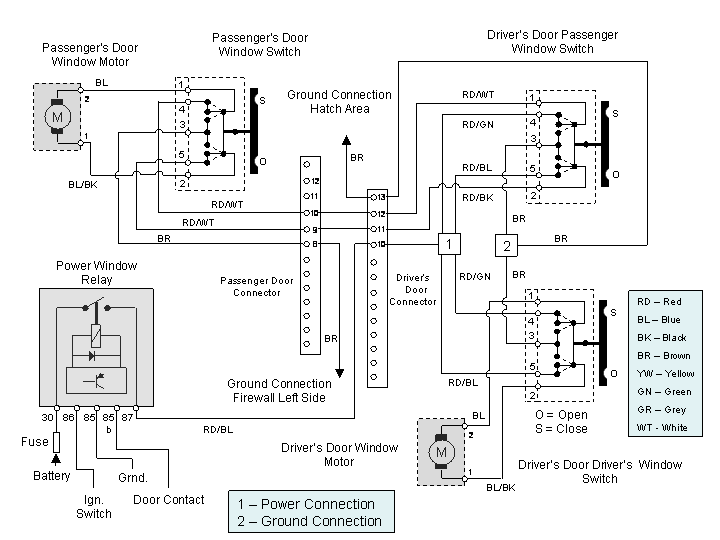Acrobat Printable Version
|
ELECT-20, Electric Window Troubleshooting
|
When things go wrong with your electric windows, it can sometimes be frustrating to figure out the cause of the problem. This troubleshooting procedure is intended to help you determine the cause of problems with the operation of your windows.
Tools

| Window will not move | Blown Fuse | If the fuse for the power windows is bad, neither window will move. So, if the problem is only one one side, the fuse is good. Check Fuse:
|
| Bad relay | If the power window relay is bad, neither window will move. So, if the problem is only one one side, the relay is good. If you suspect that the power window relay is bad, you can remove the relay and jumper terminals 30 and 87 to power the window motors. When you install the jumper, you don't need to turn on the ignition switch to test/operate the power windows. On early 944s, the power window relay is located on the lower left side of the center console near the DME computer. On late model 944s, it's located on the Central Electric Panel (G7).
|
|
| Bad Window Switch / Bad Wiring | If your window problem is only on one side, the cause is most likely a bad switch, bad wiring, or a bad window motor. The most common problem of these is the power window switch. So, we will first troubleshoot the switch and in the process check the wiring up to the switch. The passenger window switches (one on each door), are wired in series with the driver's side switch supplying power to the passenger's side switch. So, if you have a problem with the passenger's window it could be either side. The easiest way to test this is to take a known good switch (for example if the driver's window is working fine) and plug it into each of the switch locations for the passenger's window to see if you can get it to start working.
|
|
| Windows Move Slowly | Window Mechanism Dragging | Lubricate Tracks on Window Mechanism. For instructions on removing the door panels to access the power window motor go to: Door Panels - Removal and Installation.
|
| Window Motor | Check for proper voltage at power window motor plug when window switch is depressed. For instructions on removing the door panels to access the power window motor go to: Door Panels - Removal and Installation.
| |